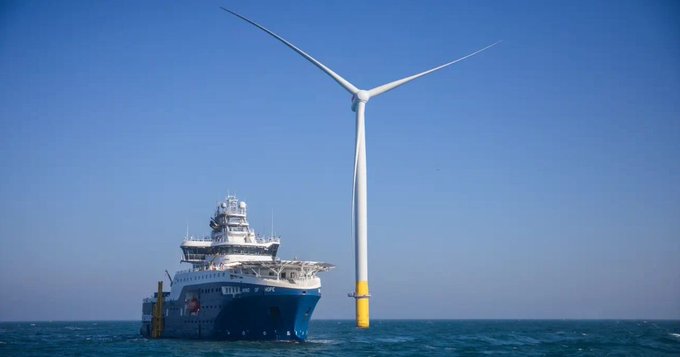The first of 27 Vestas V174-9.5 MW wind turbines to be installed at the Arcadis Ost 1 offshore wind farm in the Baltic Sea is now done. Parkwind, a Belgian developer, developed and owns the offshore wind farm, which is its first project in Germany.
The 257 MW Arcadis Ost 1 has now also marked a few other ‘firsts’. It has become the first 9.5 MW Vestas turbine with a 174-meter rotor to be installed on a commercial project. It is also the first time Heerema Marine Contractors’ Thialf entered the Baltic Sea. Furthermore, it is the first time a wind turbine was installed using a novel floating installation method.
Vestas currently has two European projects in the works that will use the V174-9.5 MW technology,. These include Arcadis Ost 1 and the Baltic Eagle offshore wind farm. Both of them will be located in the German Baltic Sea.
The novel floating installation method at Arcadis Ost 1 begins with simultaneous assembly and lifting operations. It was first tested in the Dutch North Sea last year onboard Heerema’s crane vessel Sleipnir.
Read Also: First phase of sea cable installation completes in Netherlands
Vestas V174-9.5 MW wind turbines installation at Arcadis Ost 1
One of Thialf’s two main cranes lifts the pre-assembled wind turbine tower onto the foundation, while the second main crane is used to pre-assemble the wind turbine at the same time.
Heerema developed a method for wind turbine pre-assembly. Here, the Rotor Nacelle Assembly (RNA) lift takes place on a “support” tower on board the crane vessel. According to the developer, the support tower provides a stable platform for the fast and secure assembly of the nacelle and blades.
Once pre-assembled, the entire RNA is lifted in one piece onto the wind turbine tower. According to Parkwind, the reduced number of lifts between the vessel and the structure eliminates key risks associated with the floating installation. By developing new tools, Vestas has delivered RNA lift-feasible components to support the offshore floating installation at Arcadis Ost 1.
According to Parkwind, this method has two main advantages. These include zero seabed interaction. Thus, it is especially important in areas with significant water depth or difficult soil conditions. The other advantage is a shorter installation cycle.
Thialf, the world’s second-largest semi-submersible crane vessel (SSCV), recently made its first entrance into the Baltic Sea for wind turbine installation work, requiring modifications to the vessel’s A-frames to allow passage under the Storebaelt Bridge, known as the “gate to the Baltic Sea.”

